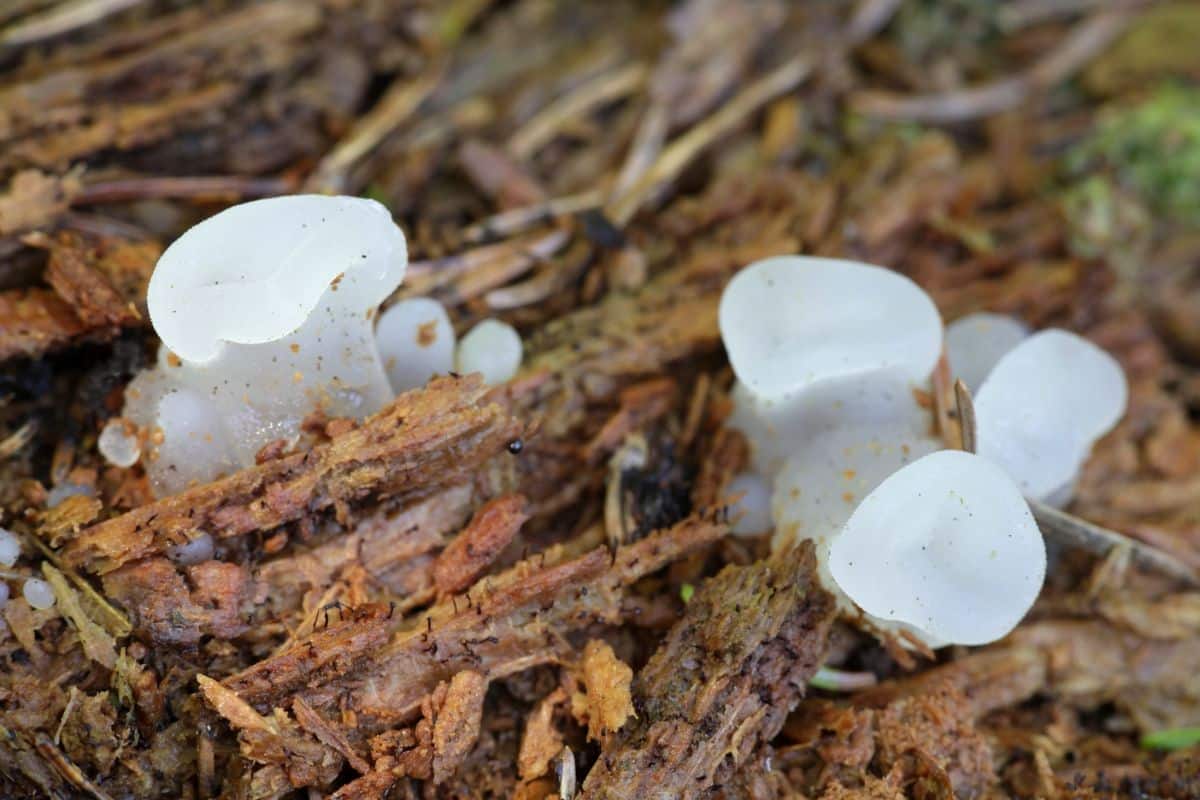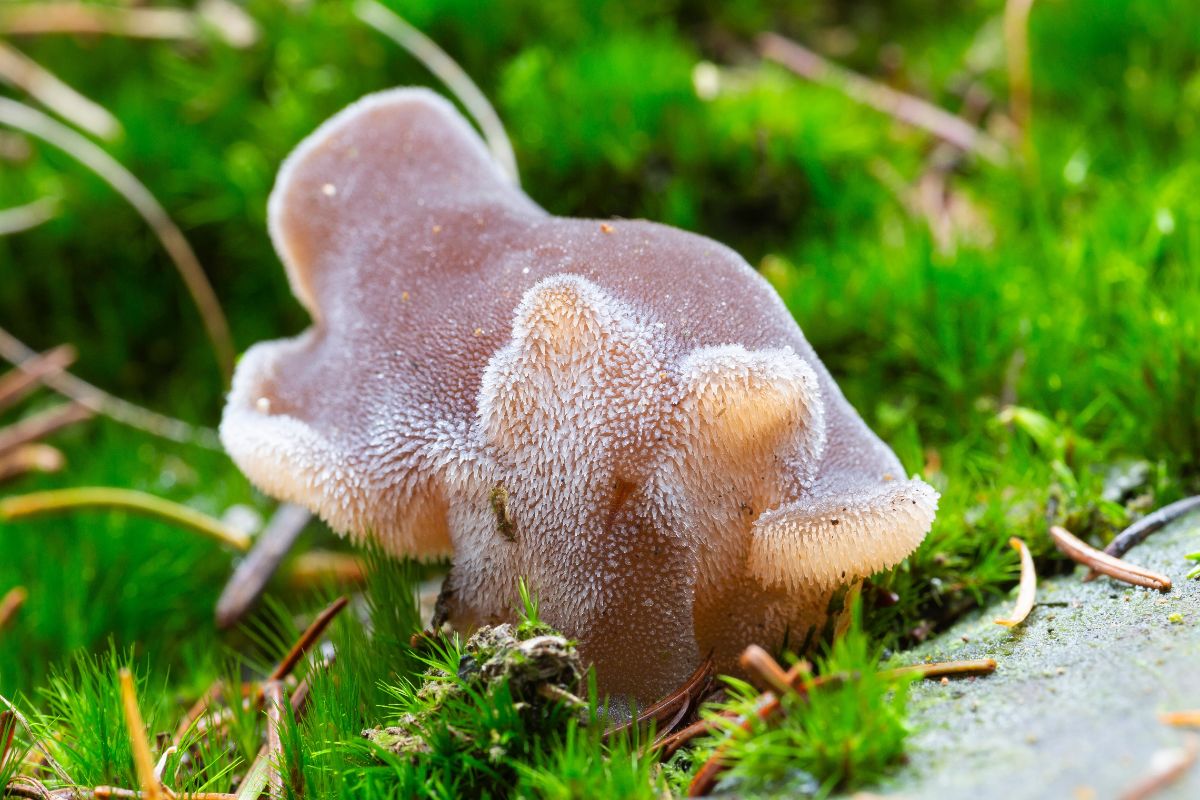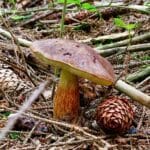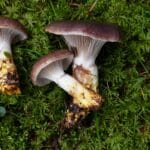If you’ve ever had the pleasure of being licked by a cat, you’ll understand how this fungus got its common name. The cat’s tongue mushroom, thank goodness, aren’t as sandpaper-like, but they do look like they could be. The cat’s tongue fungus (Pseudohydnum gelatinosum) is edible but not commonly foraged because of its odd texture that many people find unappetizing.

Jump to:
All About Cat’s Tongue
Cat’s tongue is a gelatinous fungus with stubbly jelly teeth-like growth on the underside. The consistency is like a jelly candy; it can even be made into sweet candy jelly. Other common names for the cat’s tongue include jelly tooth, white jelly mushroom, toothed jelly fungus, and false hedgehog fungus.
The cat’s tongue fungus was first described from Europe and given the name Pseudohydnum gelatinosum – false “hedgehog” jelly. Hydnum species are a widespread toothed fungus, commonly called hedgehogs. DNA studies in 2022, though, found there is diversity among the North American species and that it is likely that P. gelatinosum is a European species.
For now, there are three scientifically undescribed cat’s tongue species in North America. In the near future (hopefully), we will see documented species names for the types here. They all look remarkably similar, if not identical, so for the forager, scientific naming isn’t as vital.

Cat’s Tongue Mushroom Identification
Season
Late summer and fall. It grows into winter in warmer climates.
Habitat
Cat’s tongue fungi grow on dead and decaying wood. They like woody debris; sometimes, the wood is very decayed or buried, and it looks like the mushroom is growing from the ground. They’re also known to grow from standing trees.
This mushroom grows from conifer wood, where it causes a white rot. It can grow alone but more often is in scattered or dense groupings. This fungus likes extremely well-rotted conifer remains, stumps, and logs.
Cat’s tongue is widespread across North America but seems to prefer the coasts and is virtually unrecorded in the middle states. This fascinating map from Mushroom Observer shows a very interesting range.


Identification
Jelly teeth cat’s tongue fungi coloring ranges from bright white to gray to dark brown. The flesh, especially when it is a lighter color, is translucent. It tends to be more translucent in the thinner upper areas. The fungus is rubbery and squishy – it easily smooshes between pressed fingers. However, it is not sticky or overly slimy. The consistency is more like a gummy bear, jelled, dense, and sliceable.
This is a small mushroom, rarely getting larger than 2″ across the widest part. The upper cap portion is often tongue or kidney-shaped, but there is a lot of variance. Caps will morph and become oddly shaped when their growth presses them into a tree or other cat’s tongues. The top of the cap is flattened and usually curled at the edges. The upper surfaces are either smooth or very lightly fuzzy.


On the underside, the cat’s tongue has hundreds of tiny translucent spines that run down the stem. These spines, or teeth, are very short and stubby and might be missed without close inspection. The stem is commonly off-center from the cap.
The cat’s tongue mushroom doesn’t have much of a stem. It is usually stubby, less than 1″ long. When the fungus is growing from the top of a log, it might develop a longer stem and stretch out a bit more.
There is no distinctive odor or taste. Spore prints are white.
There are no real lookalikes for this fungus; it is truly a unique one that is a joy to find. Just make sure you match all the characteristics above and you can be pretty sure of your ID.


Foraging Cat’s Tongue Mushrooms
Cat’s tongue fungi stand out against the decay of conifer debris, stumps, and trees. This is especially true when they’re white. Darker specimens blend in very well. Cut the mushroom at the base or pull it up very gently.
Because these fungi are small, you need to collect a lot to do anything substantial with them, like making gummies. Store them in a separate bag or container when foraging, as they’ll easily get squished and destroyed.

Check out more of our edible mushroom guides on Mushroom Appreciation.
Cooking With Cat’s Tongue Fungi
The jelly tooth can be eaten raw or cooked; either way, it retains its gelatinous texture. Eating cat’s tongue fungus is like biting into a bit of dense jello. It’s not a consistency everyone likes, but it is nice for varied texture and appearance.
Cat’s tongue doesn’t have a distinctive flavor. They’re rather bland, which means they can absorb and take on other flavors.
Cat’s Tongue Mushroom Recipes:

Cat’s Tongue Mushroom Common Questions
Are cat’s tongue mushrooms a good edible species?
It depends. If you find a bunch, you can turn them into mushroom gummy candies, which are amazing. In small amounts, they’re generally not worth foraging.









Leave a Reply